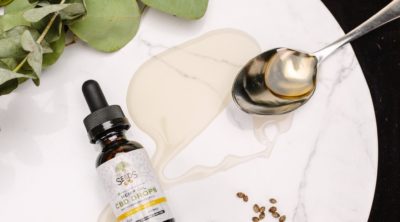
Consuming refined sugar has been associated with several medical problems, such as high blood sugar level, cardiac problems, and obesity. To minimize these effects, many people are switching on to low calorie, plant derived sweetening agents. The most popularly consumed sugar substitutes are stevia, sucralose, saccharin, and aspartame, amongst others.
What is so special about stevia as a sweetener? Stevia refers to both the sweetening agent sold in health food centers and the plant from which this sweetener is derived. While the leaves are 15 times sweeter than table sugar, the extract is claimed to be 300 times sweeter than white sugar. The ill-effects of table sugar are linked with the processing steps that involve the treatment of molasses with various chemicals to produce refined, white colored sugar crystals. Considering this, natural sweeteners based on plants are produced for the health interests of consumers. Stevia is one such product available in the form of extract and powder.
What is Stevia Made of?
As aforementioned, stevia is made from the leaves of a plant. It shares a taxonomic family Asteraceae with the sunflower, and is indigenous to the tropical and subtropical regions of America. Represented by the scientific name Stevia rebaudiana, the plant is known by varied common names (sweetleaf, sugarleaf, and sweet leaf). It usually grows as a herb in cultivation. However, it grows luxuriantly as shrubs and bushes in its natural habitat.
The glycosides present in the leaves give them intense sweetness. In the extraction process, the leaves are first dried under controlled conditions. After that, a water extraction procedure is conducted to produce the extract. Further purification steps are employed to remove unwanted glycoside substances, and at the same time, increase the sweetness intensity of the extract. Different manufacturers adopt varied techniques to produce quality stevia products.
Is it Safe for Consumption?
People who are currently on a low-carb diet may already be aware of what stevia is. But, is it safe? Or are there any associated dangers? As far as its safety is concerned, there is no clear data about the health benefits and side effects of this natural sweetener. According to proponents, they yield low calories, as the glycosides are not broken down inside the body. Hence, they are publicized as herb formulations for treating obesity.
Another claimed benefit is its use in controlling the blood glucose level in diabetics. However, there is no scientific data that supports this. In fact, the FDA has not approved the use of any stevia plant products. Some scientists even suggest that stevia can act as a potent mutagen, thus increasing the risk of cancer. Other side effects that should not be overlooked are that it slows down metabolic processes in the long run, and leads to reproduction abnormalities.
What is it Used for?
This sweetening agent is used to replace table sugar in any of the food recipes that call for regular sugar and artificial sweeteners. In addition, it is added in several commercial products too. The amount of stevia sweetener to be added depends on which product form you are using. Crude stevia leaves are required in larger amounts as compared to the quantity of extract and powder that needs to be used.


